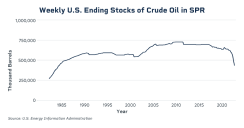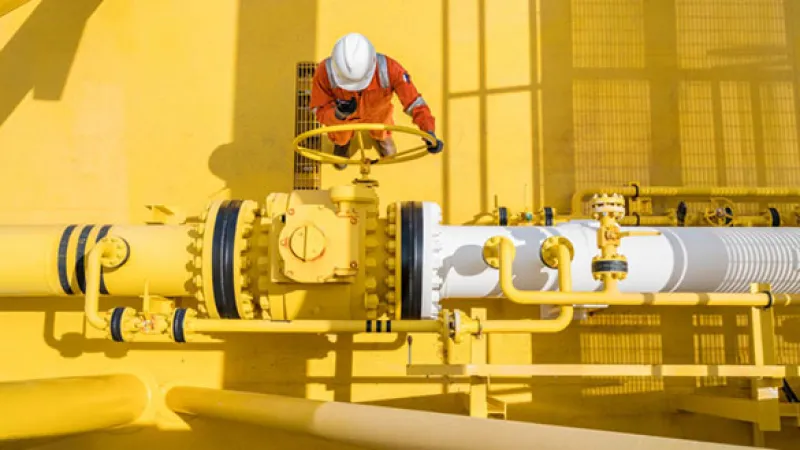Bob Iaccino, for CME Group
AT A GLANCE
- The Middle East oil embargo of 1973 spurred the creation of the Strategic Petroleum Reserve, or SPR, to safeguard U.S. national energy security against such events in the future.
- The Strategic Petroleum Reserve has dropped from over 612 million barrels to under 445 million barrels, its lowest level since 1985, in less than a year.
In November 2021, President Joe Biden ordered the excess release of 50 million barrels of crude oil from the Strategic Petroleum Reserve (SPR). Then in late March 2022, he followed up with the release of 1 million barrels daily until a total of 180 million barrels was sent out into the general market. This release schedule was indeed "historic" both in size and in speed.
The Strategic Petroleum Reserve was established in 1974 to safeguard U.S. national energy security against possible events like the Middle East oil embargo of 1973 when some oil-producing countries temporarily halted crude oil shipments to the United States and several other countries as a form of protest. The embargo caused prices at the pump to skyrocket and gas stations to run out of fuel. The era was marked by images of long lines of cars waiting to fuel up and gas stations with no gasoline to sell.
The Strategic Petroleum Reserve, or SPR, is a complex of four locations that stockpile emergency oil in deep underground storage caverns created in salt domes along the Texas and Louisiana Gulf Coasts. Although the idea of stockpiling emergency oil arose as early as 1944, it took the oil embargo of 1973-74 to spur the creation of the Strategic Petroleum Reserve, which was included in the Energy Policy and Conservation Act signed by President Ford in late 1975.
-Energy.gov
The SPR wasn't technically designed to help the U.S. government manage the price consumers paid for gasoline at the pump, but it has been used that way by multiple administrations. Whether it works or not is another question.
According to a study done at the Department of the Treasury by Assistant Secretary for Economic Policy Benjamin Harris and Deputy Assistant Secretary for Climate and Energy Economics Catherine Wolfram, Biden’s massive SPR release “lowered the price of gasoline by 17 cents to 42 cents per gallon, with an alternate approach suggesting a point estimate of 38 cents per gallon.”
The question now becomes: “Is releasing emergency oil reserves when there are no fuel shortages or lines at the gas station worth what might come next?”
According to the U.S. Energy Information Administration, the SPR has dropped to its lowest level since 1985. Stockpiles have fallen to just under 445 million barrels from their pre-release levels of just over 612 million.

That's a depletion of about 27% in crude stockpiles in a very short time, and given the current geopolitical tensions, the SPR needs to be refilled. The SPR was built to alleviate domestic supply shortages. In May 2022, the Department of Energy did release a purchase plan to refill the SPR, but it only accounted for about 60 million barrels, and it stated that these would be purchased “next year” at lower prices. The DOE noted that it was aiming to encourage U.S. drillers to boost activity now and “lower prices by guaranteeing this demand in the future at a time when market participants anticipate crude oil prices to be significantly lower than they are today.”
This purchase plan essentially introduces a buyer into the market at lower levels, that buyer being the U.S. government, and it potentially holds crude oil prices higher than they would be without the presence of this buyer. Worse yet, if there is an exogenous shock and crude supplies are interrupted, prices may not be lower. The DOE may be forced to buy at whatever market price at the time, or they may delay purchases altogether. Solicited bids from producers are taken well before actual transaction dates, so pricing and timing can cause volatility on their own from a hedging perspective. Refilling the SPR to such a large degree, whatever the timing, may affect an artificial floor in the crude oil market.
There are many other concerns with the entire operations of such a large and rapid release, but make no mistake, it was indeed “historic.” The refilling of the SPR may also be.






